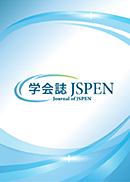Volume 4, Issue 1
Displaying 1-9 of 9 articles from this issue
- |<
- <
- 1
- >
- >|
-
2022Volume 4Issue 1 Pages 1
Published: 2022
Released on J-STAGE: August 25, 2022
Download PDF (987K)
-
2022Volume 4Issue 1 Pages 2-9
Published: 2022
Released on J-STAGE: August 25, 2022
Download PDF (1028K) Full view HTML -
2022Volume 4Issue 1 Pages 10-16
Published: 2022
Released on J-STAGE: August 25, 2022
Download PDF (1043K) Full view HTML
-
2022Volume 4Issue 1 Pages 17-22
Published: 2022
Released on J-STAGE: August 25, 2022
Download PDF (1841K) Full view HTML -
2022Volume 4Issue 1 Pages 23-29
Published: 2022
Released on J-STAGE: August 25, 2022
Download PDF (1027K) Full view HTML -
2022Volume 4Issue 1 Pages 30-34
Published: 2022
Released on J-STAGE: August 25, 2022
Download PDF (846K) Full view HTML
-
2022Volume 4Issue 1 Pages 35-43
Published: 2022
Released on J-STAGE: August 25, 2022
Download PDF (820K) Full view HTML
-
2022Volume 4Issue 1 Pages 44-48
Published: 2022
Released on J-STAGE: August 25, 2022
Download PDF (889K) Full view HTML
-
2022Volume 4Issue 1 Pages 49
Published: 2022
Released on J-STAGE: August 25, 2022
Download PDF (977K)
- |<
- <
- 1
- >
- >|
